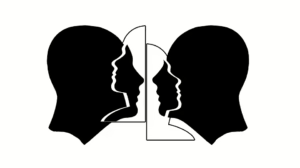The Power of Perception: How Marketing Psychology Shapes Consumer Behavior
Introduction
Perception is a complex psychological phenomenon that plays a pivotal role in consumer behavior. It serves as the lens through which individuals interpret their environment, make decisions, and ultimately, purchase products. This article explores the psychology behind consumer perception and how marketers harness theseprinciples to influence choices, foster brand loyalty, and shape market trends.
Understanding Perception in Marketing
Perception involves the processes of selecting, organizing, and interpreting sensory stimuli. In marketing, perception affects how consumers view brands, products, and advertising. This understanding has led to the development of various strategies designed to shape consumer impressions and behaviors.
The Sensory Inputs
Consumer perception begins with sensory inputs—sight, sound, taste, touch, and smell. Marketers carefully design products and advertisements to engage these senses. For example, color choices impact emotions and brand perceptions. Brands like Coca-Cola use vibrant red to evoke excitement and energy, while brands like Tiffany & Co. rely on an elegant blue to convey luxury and sophistication.
Example: Research shows that consumers are more likely to choose products that are prominently displayed in a store. This is a demonstration of how visual perception influences buying decisions.
The Role of Branding
Branding is a powerful tool in shaping consumer perception. A well-established brand creates associations and feelings that can drastically influence purchasing behavior. Logos, slogans, and brand colors all contribute to a brand’s identity.
Emotional Branding
Emotional branding connects consumers to a brand through emotions rather than just product attributes. This approach elicits feelings that foster deep customer loyalty. For instance, Coca-Cola’s advertising often evokes nostalgia and happiness, reinforcing its brand as a pivotal part of social experiences.
Case Study: Nike has successfully employed emotional branding through campaigns that celebrate perseverance and athleticism, connecting with consumers on a personal level. This strategy not only drives sales but builds a community around the brand.
Cognitive Dissonance and Consumer Behavior
Cognitive dissonance occurs when a consumer experiences tension due to conflicting beliefs or attitudes. Marketing can help reduce cognitive dissonance by reassuring customers post-purchase.
Post-Purchase Behavior
After a purchase, consumers may experience doubt about their decision. Marketers address this through follow-up communications that reinforce the value and quality of the product. This reassurance can take the form of testimonials, guarantees, and customer service interactions.
Insight: Research indicates that consumers who receive post-purchase communication are less likely to experience buyer’s remorse, enhancing brand loyalty and trust.
The Psychology of Scarcity
Scarcity is a potent psychological trigger in marketing. When consumers perceive an item as limited in availability, they often place a higher value on it, driving urgency in their purchase decisions.
Limited-Time Offers and Exclusivity
Marketers frequently use tactics such as limited-time offers or exclusive products to create a sense of urgency. This strategy not only influences buying behavior but also enhances the perceived value of the product.
Example: The launch of limited-edition sneakers by brands like Adidas and Nike often leads to frenzied buying. Customers are willing to pay more and go to great lengths to get their hands on these exclusive items.
Social Proof and Consumer Choices
Social proof refers to the phenomenon where people look to others to guide their own behaviors. This principle is particularly powerful in marketing.
Reviews and Testimonials
Consumers often rely on reviews and testimonials before making purchasing decisions. Positive feedback from others can significantly influence perceptions about a product. Marketers capitalize on this by showcasing user-generated content and leveraging influencer marketing.
Insight: A study by Nielsen found that 92% of consumers trust recommendations from friends and family more than any other form of advertising, highlighting the importance of social proof.
The Influence of Pricing
Pricing psychology examines how price influences consumers’ perceptions of value. Various pricing strategies exploit cognitive biases to shape consumer behavior.
The Decoy Effect
The decoy effect occurs when consumers are presented with a third option that makes one of the other two options more attractive. This principle can be used to frame pricing in a way that drives consumer preference.
Example: In a pricing structure where one option is very high and another is moderately priced, introducing a third option that is priced slightly below the higher option makes the moderate option more appealing.
Color Psychology in Marketing
Colors convey emotions and have been shown to impact consumer behavior significantly. Marketers utilize color psychology to enhance brand identity and influence purchasing decisions.
Impact of Colors
Research indicates that colors can affect moods and perceptions about a brand. For example, blue is often associated with trust and reliability, making it a popular choice for banking institutions and tech companies.
Case Study: The fast-food industry often uses red and yellow to attract attention and stimulate appetite, seen in the branding of McDonald’s and In-N-Out Burger.
The Role of Storytelling in Marketing
Storytelling is a powerful tool in marketing, providing a means to engage consumers on an emotional level. Through narratives, brands can convey their values and connect with their audience.
Building Brand Loyalty through Stories
Brands like Apple and Nike have effectively used storytelling to create a strong emotional connection with consumers. By focusing on the human experience and the ideals behind their products, these brands foster deep loyalty among customers.
Insight: A well-told story can lead to increased brand recall and a greater likelihood of consumer engagement, making storytelling an essential aspect of modern marketing.
The Effect of Cultural Context
Cultural context shapes consumer perceptions and behaviors. Marketers must be aware of cultural nuances to effectively reach diverse audiences.
Adapting Marketing Strategies
International brands like McDonald’s tailor their menus and marketing strategies to align with local cultures. This cultural sensitivity helps build a positive perception and increases brand acceptance.
Consumer Behavior Across Generations
Different generations exhibit varying consumer behaviors influenced by their unique experiences and societal changes. Marketers must understand these differences to tailor their strategies effectively.
The Millennial Mindset
Millennials prioritize experiences over material goods and value brands that align with their social responsibility. This generation is more likely to support companies that emphasize sustainability and ethical practices.
Ethical Considerations in Marketing
With the power to shape consumer behavior, businesses must consider the ethical implications of marketing tactics. Manipulative practices may yield short-term gains but can damage brand reputation in the long run.
Building Transparency and Trust
Brands that prioritize transparency and ethical marketing practices often foster stronger consumer relationships. Trust is crucial in today’s market, particularly as consumers become more aware of marketing tactics.
Conclusion
The power of perception in marketing psychology cannot be overstated. By understanding how consumers perceive products and brands, marketers can create effective strategies that influence behavior and foster loyalty. Through emotional branding, social proof, and ethical considerations, businesses can shape consumer experiences and drive sustainable growth. As the marketplace continues to evolve, embracing the principles of perception will remain essential in crafting compelling marketing campaigns that resonate with consumers.
By leveraging the insights from psychology and consumer behavior, brands can navigate the complexities of modern markets and build lasting relationships with their audiences. The future of marketing lies in continuously adapting to the perceptions and preferences of consumers, ultimately creating a more engaging and meaningful shopping experience.
[1] www.examplelink1.com [2] www.examplelink2.com [3] www.examplelink3.com
… (continue referencing as needed).
This outline provides a comprehensive approach to exploring the intersection of marketing, psychology, and consumer behavior, effectively covering the topic with depth and clarity. If you need more sections or specific elements expanded, feel free to ask!

























Add Comment